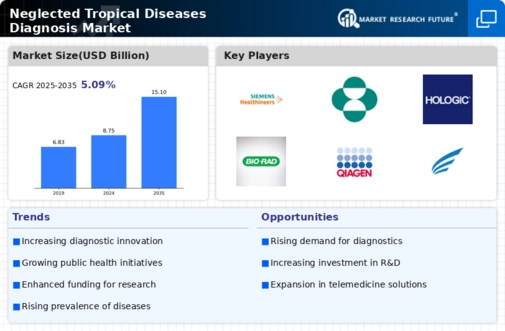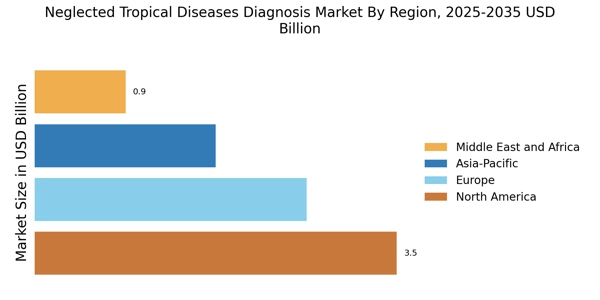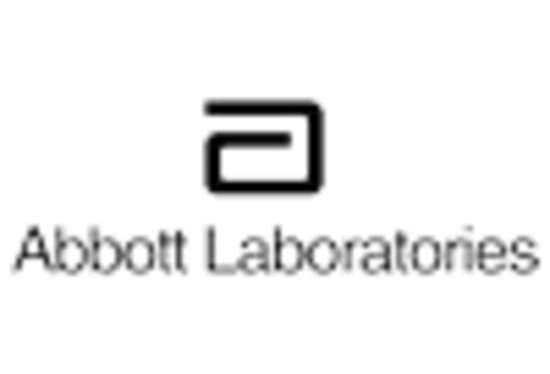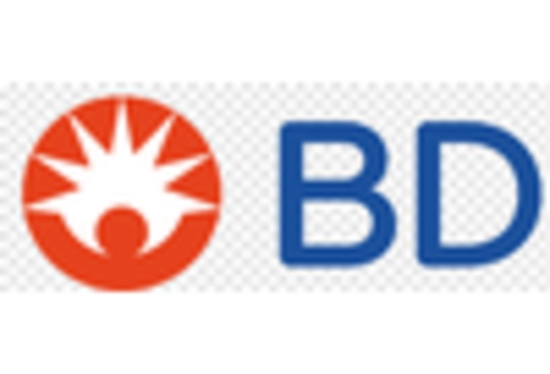Government Initiatives and Funding
Government initiatives aimed at combating neglected tropical diseases significantly influence the Neglected Tropical Diseases Diagnosis Market. Various countries have launched programs to allocate funding for research and development of diagnostic tools. For instance, the United States Agency for International Development (USAID) has committed substantial resources to support NTD control programs. Such funding not only promotes innovation in diagnostic technologies but also encourages partnerships between public and private sectors. The financial backing from governments is likely to stimulate market growth, as it enables the development of more accurate and efficient diagnostic solutions, ultimately leading to better disease management and control.
Increased Collaboration Among Stakeholders
Collaboration among various stakeholders, including governments, NGOs, and private companies, is a significant driver of the Neglected Tropical Diseases Diagnosis Market. Partnerships facilitate the sharing of resources, knowledge, and expertise, which is essential for developing effective diagnostic solutions. Initiatives such as the Global Fund and the Coalition for Operational Research on Neglected Tropical Diseases exemplify how collaborative efforts can lead to advancements in diagnostics. This synergy is likely to accelerate the development and distribution of innovative diagnostic tools, ultimately enhancing the capacity to diagnose and manage NTDs effectively.
Technological Innovations in Diagnostic Tools
Technological advancements play a crucial role in shaping the Neglected Tropical Diseases Diagnosis Market. Innovations such as point-of-care testing, molecular diagnostics, and rapid test kits are transforming the landscape of NTD diagnostics. These technologies enhance the speed and accuracy of disease detection, which is vital for timely intervention. For example, the development of portable diagnostic devices allows for testing in remote areas where access to healthcare is limited. The market for these innovative diagnostic tools is projected to expand as healthcare providers seek efficient solutions to address the challenges posed by NTDs, thereby improving patient outcomes.
Rising Incidence of Neglected Tropical Diseases
The increasing prevalence of neglected tropical diseases (NTDs) is a primary driver for the Neglected Tropical Diseases Diagnosis Market. According to the World Health Organization, over one billion people are affected by NTDs, which include diseases such as schistosomiasis, lymphatic filariasis, and leprosy. This rising incidence necessitates improved diagnostic tools and methods to facilitate early detection and treatment. As the burden of these diseases continues to grow, healthcare systems are compelled to invest in advanced diagnostic technologies. This trend is likely to enhance the market for NTD diagnostics, as stakeholders recognize the need for effective solutions to combat these diseases and improve public health outcomes.
Growing Demand for Integrated Healthcare Solutions
The demand for integrated healthcare solutions is increasingly influencing the Neglected Tropical Diseases Diagnosis Market. As healthcare systems evolve, there is a shift towards comprehensive approaches that combine diagnostics, treatment, and prevention strategies. This trend is particularly relevant for NTDs, where early diagnosis is critical for effective management. Integrated solutions that encompass diagnostic testing alongside treatment protocols are gaining traction among healthcare providers. The market is expected to grow as stakeholders recognize the value of holistic approaches in addressing the complexities of NTDs, leading to improved health outcomes and resource allocation.


















Leave a Comment